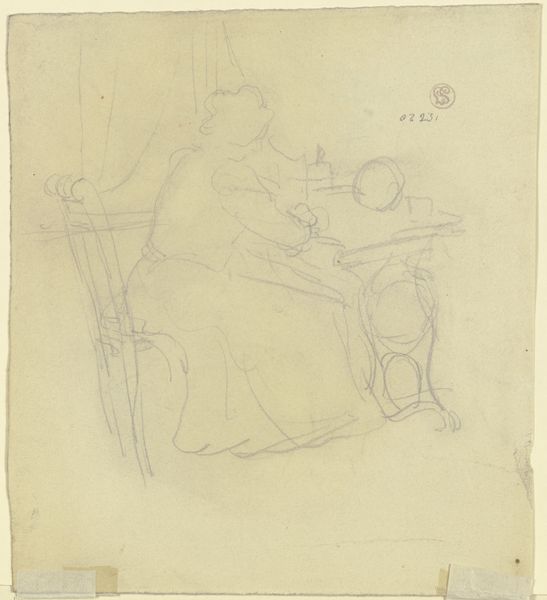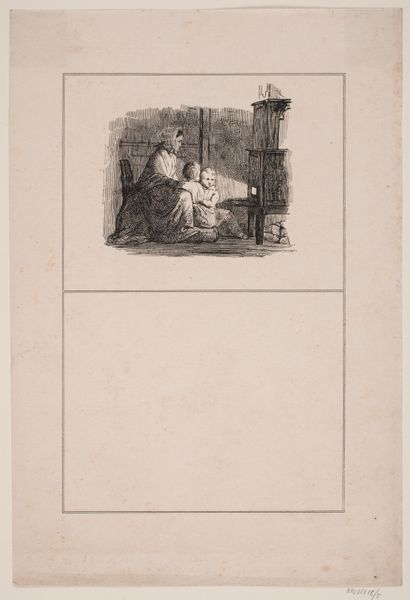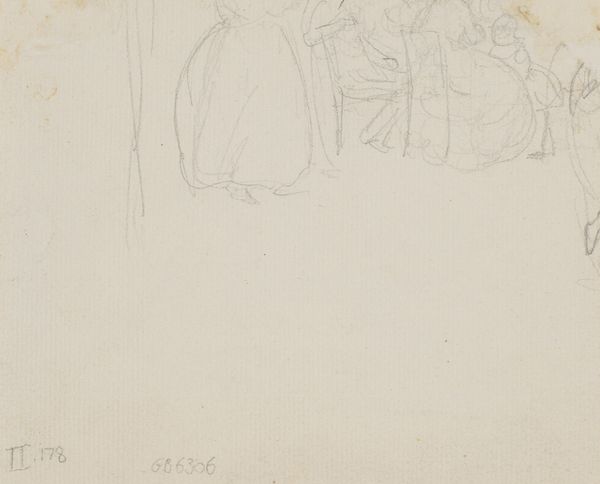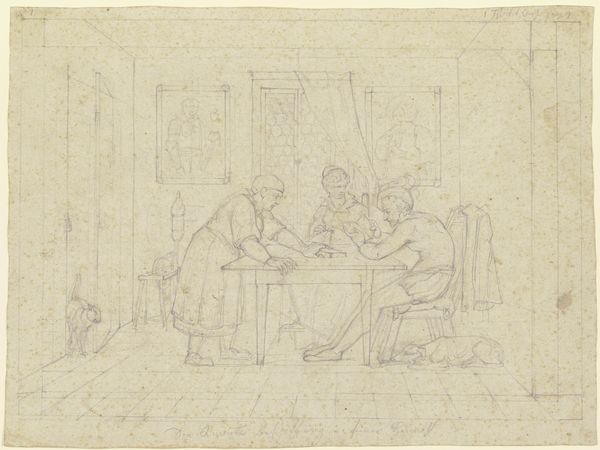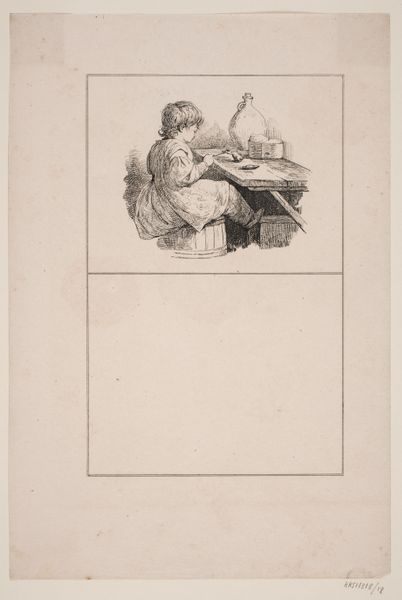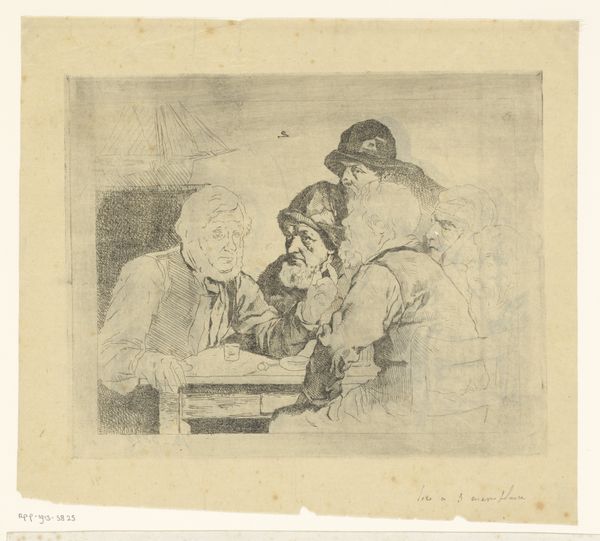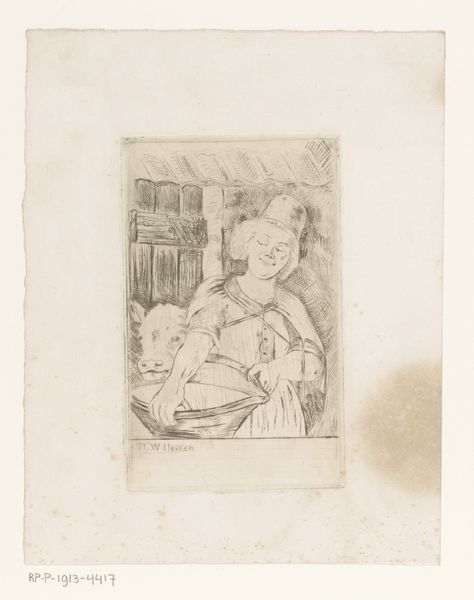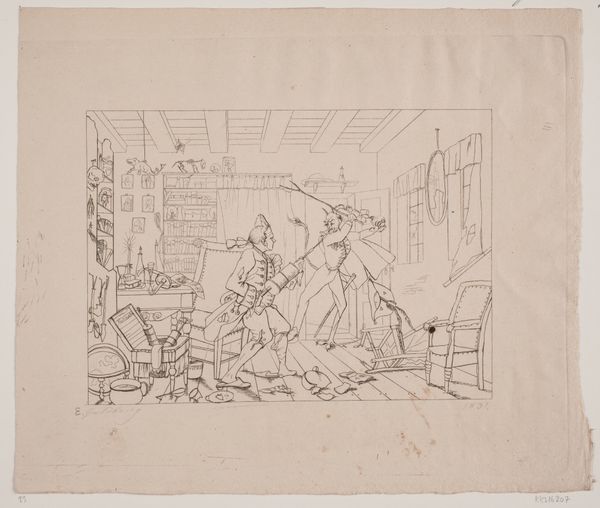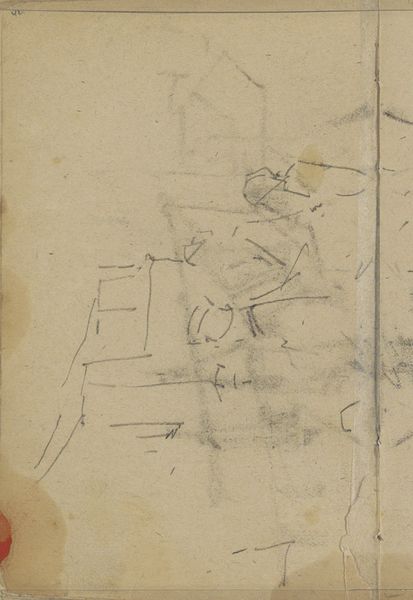
drawing, pencil
#
portrait
#
drawing
#
impressionism
#
pencil
#
genre-painting
Dimensions: 173 mm (height) x 185 mm (width) (bladmaal)
Curator: This is a pencil drawing by Hans Smidth titled "Two Small Girls with Pantaloons at a Table Outdoors," created around 1880. It's currently held in the collection of the SMK, the National Gallery of Denmark. Editor: It feels incredibly intimate, doesn't it? Like a fleeting glimpse into a private moment. The light, tentative lines suggest the artist was trying not to intrude, almost holding his breath as he captured this scene. Curator: Smidth's drawing captures the ephemeral nature of childhood through these loose, Impressionistic strokes. The "mamelukker," or pantaloons, themselves carry layers of cultural meaning. They represent a certain societal expectation, innocence perhaps, but also restriction for these young girls. Editor: Restriction definitely echoes here. Note the wooden fence defining the setting: it suggests not freedom but confinement, the strict borders that circumscribe young girls’ play and exploration during that time. Curator: Indeed, there’s a defined line—literally in the fence, but also figuratively. The child hiding under the table introduces a disruption into the expected composition. Editor: Yes! A wonderful challenge to normative portrayals of girls. Instead of just proper decorum, there is resistance—even a kind of shadow-self lurking beneath respectability and composure. Do you also sense a critique of bourgeois domesticity? Curator: I see the fence also acting as a divider and reference point. These children have an internal world but one that exists in relation to other external restraints. We find those restraints within their behaviors, captured through form: the figures of the two small girls stand tall while we find another smaller form cowering below. The symbolism offers great complexity within this genre scene. Editor: Agreed. And even though Smidth is often labeled an Impressionist, I believe it reflects something deeper here: the tensions between the constructed facade and lived reality, where childhood—and particularly girlhood—is fraught with complexities. Curator: Absolutely. It prompts reflection. By giving glimpses of the physical appearance but also deeper emotional lives and societal complexities that surround the symbols of ‘childhood’ and ‘girlhood,’ the viewer is tasked to question these images and how these might continue to exist and operate today. Editor: Well said. I keep looking at those small lines forming faces, finding ever more ambiguity, which I suppose is exactly what makes this work so compelling, even today.
Comments
No comments
Be the first to comment and join the conversation on the ultimate creative platform.
